Why you can trust Tom's Hardware
To read about our monitor tests in-depth, please check out Display Testing Explained: How We Test PC Monitors. We cover brightness and contrast testing on page two.
Uncalibrated – Maximum Backlight Level
To compare the EX3415R’s performance, we’ve reached into our database for a few 34-inch and two 38-inch ultrawide monitors. Alienware’s AW3821DW and Acer’s Predator X38 IPS monitors run at 144 Hz and 175 Hz, respectively. Cooler Master’s GM34-CW, Gigabyte’s G34WQC and MSI’s MPG Artymis MPG343CQR are all VA panels running at 144 Hz.
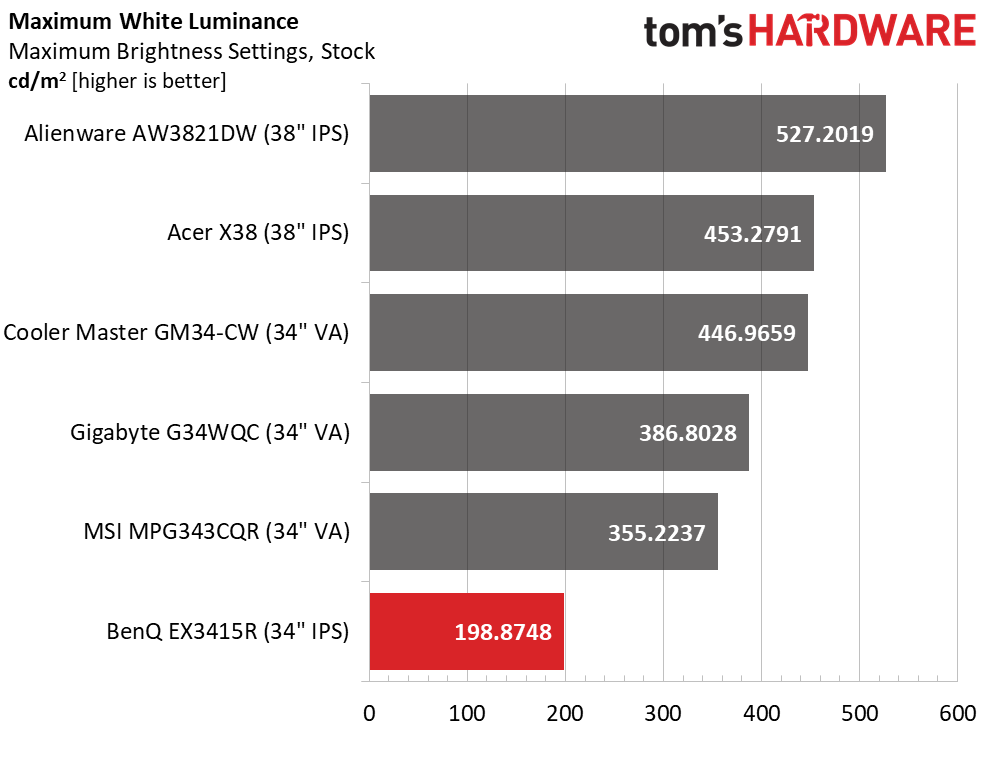
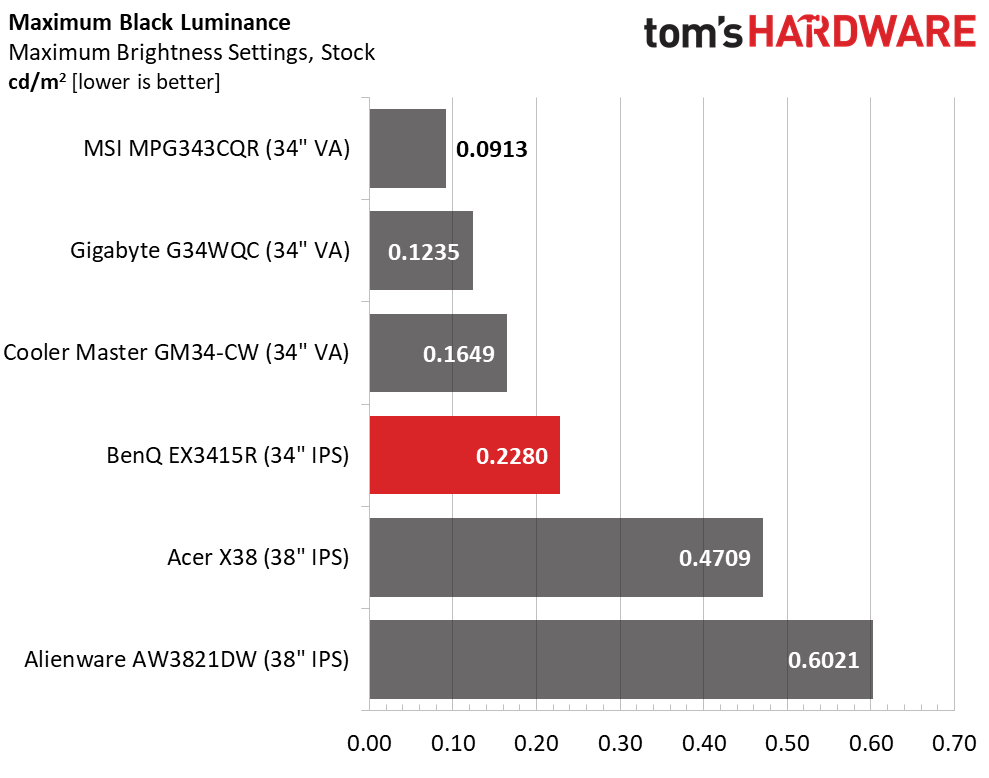
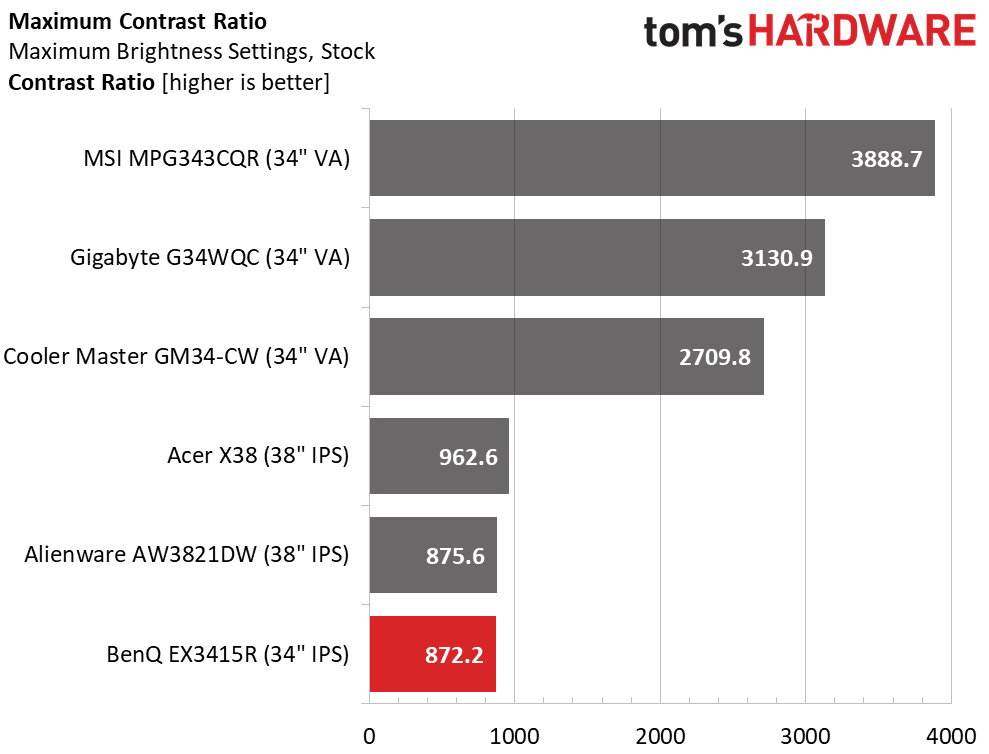
Though the EX3415R has no problem topping 400 nits in HDR mode, it only achieves 198 nits in its default Racing Game preset. Changing picture modes and scenarios won’t increase the maximum brightness for SDR content. While 198 nits is sufficient for most indoor environments, you’ll want to avoid sunlit windows. It would be nice to have at least another 100 nits of headroom here.
The EX3415R’s Black levels are just average, so its contrast is an unimpressive 872.2:1. This is a bit below average among IPS panels but note that the Alienware isn’t much better, and the Acer is under 1000:1 too. VA is the king in this test, as always. Many new flat IPS panels have upped the game to around 1200:1 but curved ultra-wides still have some ground to make up in the contrast department.
After Calibration to 200 nits
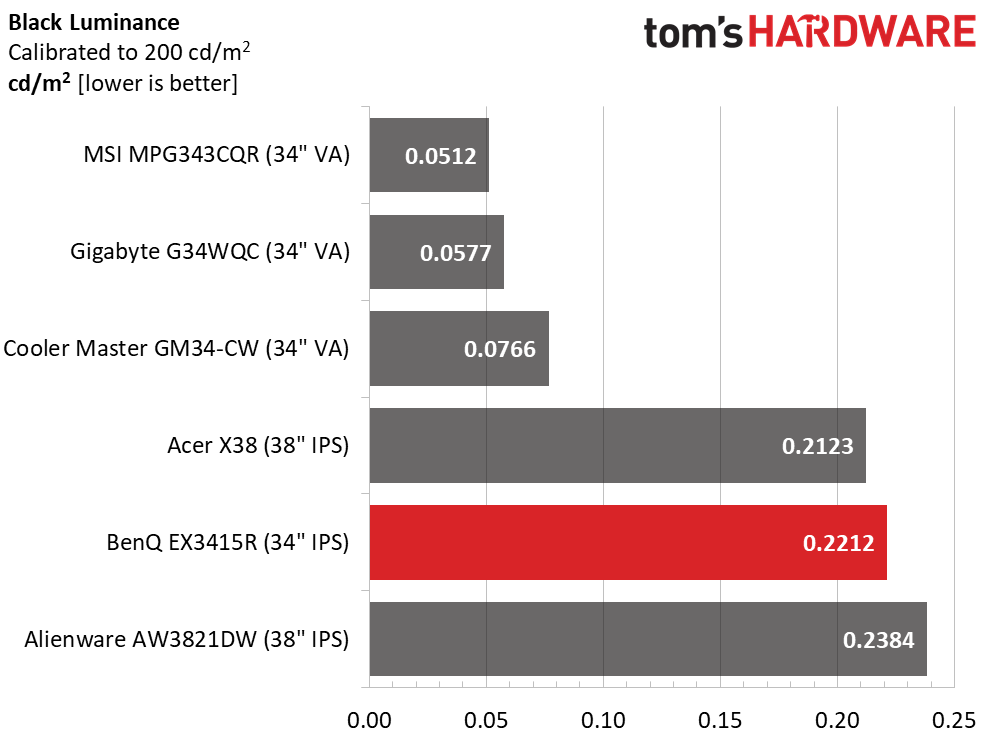
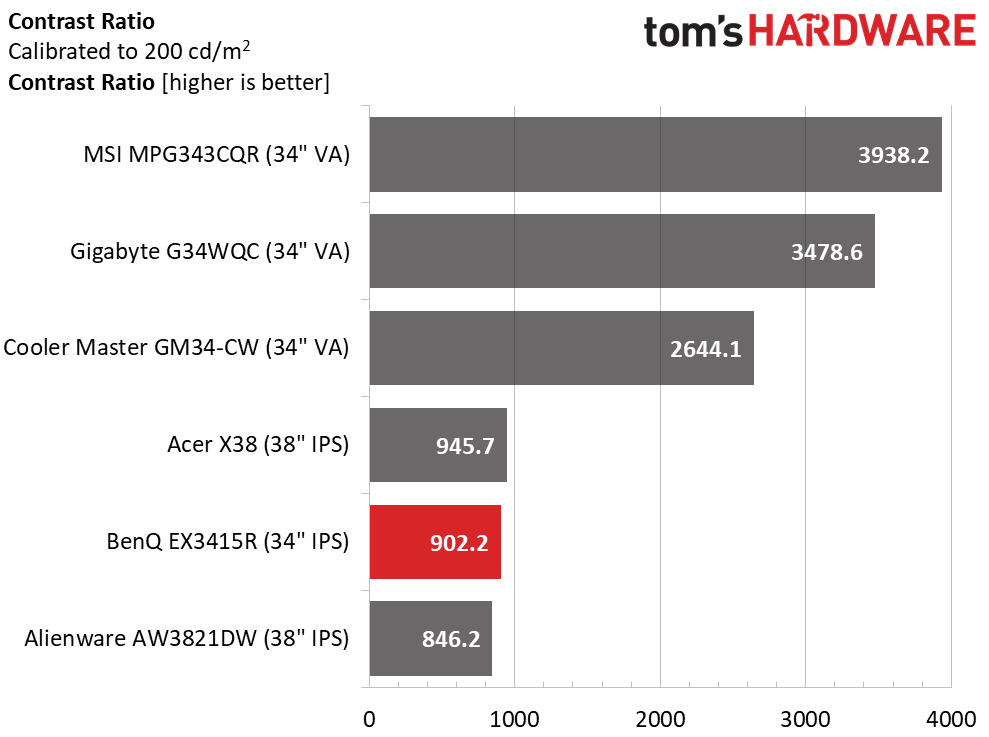
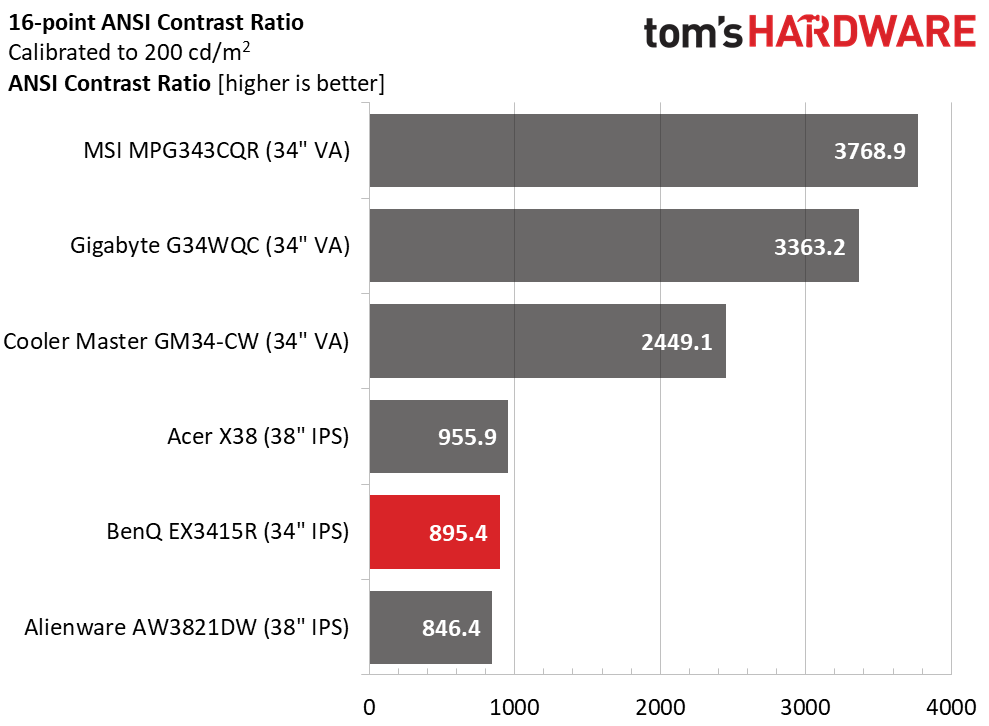
Calibrating the EX3415R to 200 nits brightness (see our recommended settings on page 1) improved both black levels and contrast, but the numbers still lag behind the latest IPS flat screens. We gained a bit of headroom too with around 210 nits of maximum output after adjustment. Though this is average performance for an IPS-based ultrawide monitor, it’s below average when compared to all IPS monitors.
ANSI contrast remains stable at 895.4:1. This shows good quality control and a properly fitted grid polarizer. You’ll see later that the EX3415R’s screen uniformity is excellent.
Get Tom's Hardware's best news and in-depth reviews, straight to your inbox.
Current page: Brightness & Contrast
Prev Page Features and Specifications Next Page Grayscale, Gamma & Color
Christian Eberle is a Contributing Editor for Tom's Hardware US. He's a veteran reviewer of A/V equipment, specializing in monitors. Christian began his obsession with tech when he built his first PC in 1991, a 286 running DOS 3.0 at a blazing 12MHz. In 2006, he undertook training from the Imaging Science Foundation in video calibration and testing and thus started a passion for precise imaging that persists to this day. He is also a professional musician with a degree from the New England Conservatory as a classical bassoonist which he used to good effect as a performer with the West Point Army Band from 1987 to 2013. He enjoys watching movies and listening to high-end audio in his custom-built home theater and can be seen riding trails near his home on a race-ready ICE VTX recumbent trike. Christian enjoys the endless summer in Florida where he lives with his wife and Chihuahua and plays with orchestras around the state.
-
cknobman $1000 for an edge array with only HDR 400 and not great contrast ratio?Reply
8bit panel?
Might be worth it for $650 tops -
g-unit1111 The Gigabyte G34wqc is 1/2 the cost and a better performer? Pretty lame, BenQ.Reply
I'll stick with BenQ for the cheap 1080P panels - that's where they really shine. -
coloradoblah The gigabyte is a hell of a bargain, granted it took me a few tries to get one that didnt have stuck pixels but for the price its pretty damn good.Reply